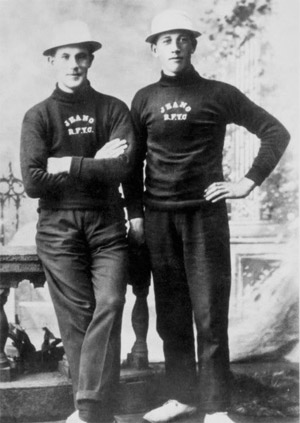The Unlikely Story of First Crewed Yacht Charters
It is fair to say that the success of a yacht charter is very much down to its crew members. The cruising itinerary is, of course, important for the enjoyment of guests, but a charming and well-connected Captain supported by a friendly, hard-working crew makes all the difference to the guest experience on a crewed yacht charter.
It might seem hard to imagine a luxury yacht without a proficient crew; indeed, for many in the superyacht industry it is probably almost impossible to concede that one could exist without the other. But it wasn’t always the case.
Let’s take a look back in time at the history of yachting
Quite surprisingly, the origins of crewed yacht charters do not stem from wealthy families sailing along the coast of Italy in the early 19th century, or even from royalty on the French Riviera where they took to the sea to escape the heat.
In fact, they come from the often hostile Scottish seas in the late 1800s and early 1900s, when agricultural workers from the Highlands lay down their tools to skipper for Scotland’s wealthy industrialists in a series of summer yachting races.
According to a new book detailing the history of yachting, well-known Scots such as the Singer sewing machine family, the Teacher whisky magnates and the Lipton tea exporters were all huge sailing fans who recruited local crofters from the Scottish Highlands to crew their yachts.

The men were well known for their seamanship skills and were sought after by rich families to crew their yachts in often gruelling conditions over a 22-week season. The yachting season followed a long winter and spring spent in the fields, planting crops and tending to the land and its harvest.
Work carried out by the first-ever crews was arguably a lot harder than the tasks expected of yacht charter crews today. Engines were extremely rare, and the men had to expertly navigate the yachts in perilous conditions under sail. They had to be extremely physically strong.
“The seasonal work fitted well into the crofting calendar,” the book explains. “The men cut the peats and planted their crops before departing for the yachting season. They returned in the autumn to bring home the peats and take in the harvest.”
One similarity between the first-ever yacht crews and those that work today on luxury yacht charters can be drawn from the book, however, it appears that even in the late 19th and early 20th century, yacht crews were paid handsomely, as are many crew members today.
Authors James MacGregor and Robyn Mackenzie, both of whom had ancestors who crewed on the yachts, said that the men were happy to work on the sailboats as the job offered a guaranteed cash income, which made an important contribution to the economy of the area.
If you want to find out more about the origins of the first crewed yacht charters, copies of the book are available from the Ullapool Museum, Ullapool Bookshop and The Ceilidh Place Bookshop.

 Navigating Love and Work: Challenges and Limitations for Couples Working Together on Superyachts
Navigating Love and Work: Challenges and Limitations for Couples Working Together on Superyachts 10 things nobody tells you before being a Yacht Stewardess
10 things nobody tells you before being a Yacht Stewardess Is the yachting industry right for you?
Is the yachting industry right for you? Luxury Yacht Market Analysis 2019-2025
Luxury Yacht Market Analysis 2019-2025 New campaign says women can captain superyachts
New campaign says women can captain superyachts